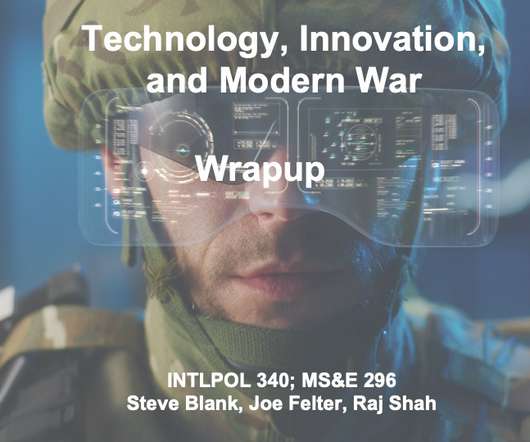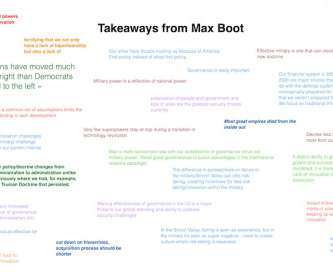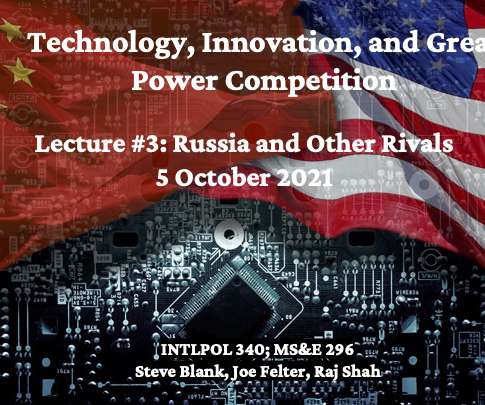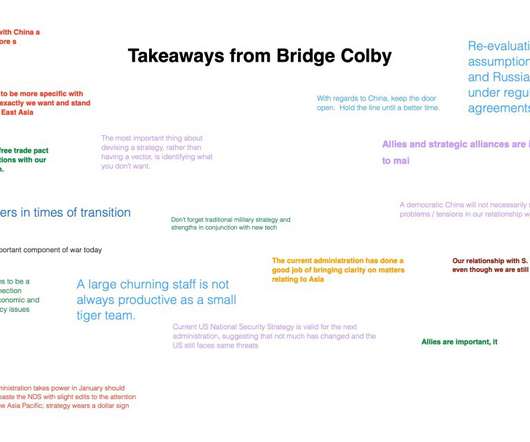Technology, Innovation, and Modern War – Wrap Up
Steve Blank
JANUARY 8, 2021
This class, Technology, Innovation, and Modern War was designed to give our students insights on how the onslaught of new technologies like AI, machine learning, autonomy, cyber, access to space, biotech, hypersonics, and others has the potential to radically change how countries fight and deter threats. Today the U.S.


















Let's personalize your content